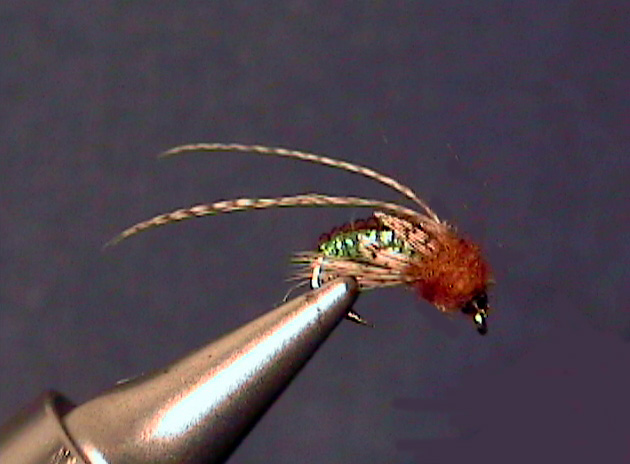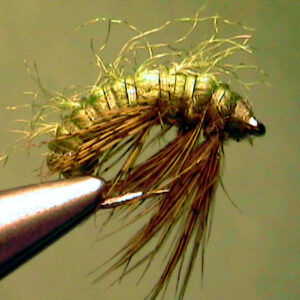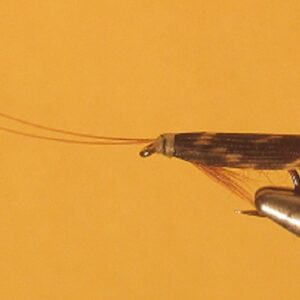Hook Size: 14/16
The Perfect Fly Green Sedge Caddis Pupa trout fly imitates the Green Sedge Caddis larva stage of life. Their larvae live in a case type shelter until the pupa is formed just prior to the hatch. Just prior to the hatch, the pupa comes out of its case and accents from the bottom of the stream to the surface where it emerges into an adult. This makes them easy prey for trout. They should be fished from the bottom to the surface of the water by first allowing the fly to sink to the bottom and then bringing the fly up to the surface using the current and the tip of the rod.
There are so many Green Sedge species, I don’t doubt that there are other times of
the year that these caddisflies hatch in quantities worth noting. When a major hatch
of any one species starts, it seems to be almost a month before all of them hatch,
deposit their eggs and die. They can live for a short time out of the water.
The pupae of the Green Sedges swim to surface when emerging. In the Spring, this
usually occurs during the late afternoon hours. In the Summer, the emergence takes
place in the evenings. The warmer the water and air, the later in the day they hatch.
Presentation:
Imitations of the pupae may be presented on the bottom of the riffles and runs
before the hatch actually begins. To do this, add weight a few inches above the
pupae imitation and allow it to sink to the bottom. Fish it just like you would fish a
nymph in the runs and riffles.
During the hatch, imitate the Green Sedge pupae by bringing the fly back to the
surface on the swing. Use a down and across presentation in the areas of he stream
where the fly will surface in the same general area of the runs and riffles the Green
Sedges are hatching. By stopping the movement of the rod tip, the current will bring
the fly back to the surface at the end of the swing. That’s the point at which most
trout take the pupa imitation.
You may also try our Perfect Fly imitation of the pupa presented just under the
surface using a dead drift. Trial and error should tell you which method works best.
It greatly depends on the water you are fishing. Most of these caddisflies hatch from
the riffles.
The idea is to imitate the pupae rising from the bottom to the surface of the water to
hatch. Whether you fish in an upstream or a downstream direction, make sure you
allow the fly to rise back to the surface. Most of the time, the trout eat the emerging
pupae just under the surface near the ends of the runs and riffles. The faster water
can carry the pupae a good distance downstream before the caddisflies can dry
their wings and depart the water.


